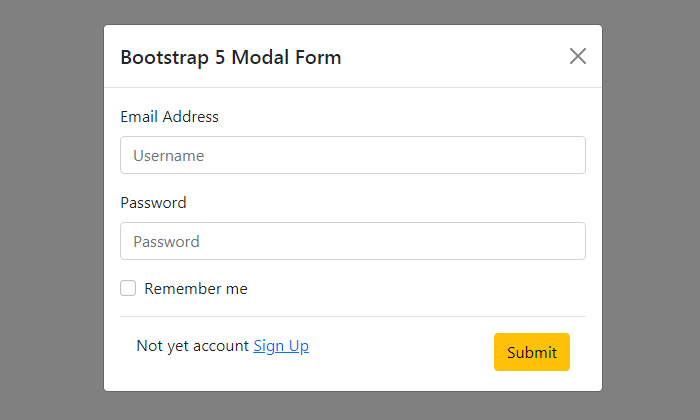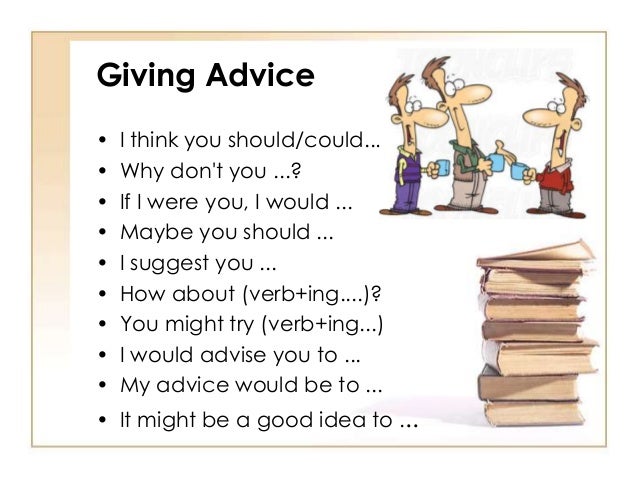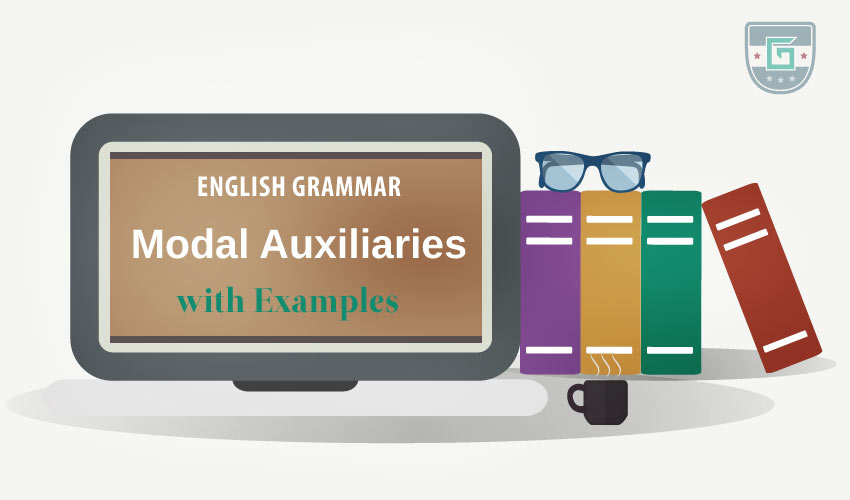Modal verbs are are the bread and butter of every grammar class. Students encounter them at all levels, from foundation to proficiency. In C-level classes, students should be able to recall all types of modal verbs and identify what job they do. Modal verbs can signify ability, probability, advice, request, permission, prohibition, obligation, certainty, and possibility.
Of course, teaching students about all nine of these categories in one session would be like drinking water from a firehose. So I've provided three learning activities aimed to engage C-level students and develop their fluency of modals of possibility. It's important that students are equipped with useful phrases, expressions that they can actually use. Modal verbs are so common that most English speakers don't even know what the grammatical name for them is. Note that modal auxiliary verbs are a type of auxiliary verb.
Auxiliary verbs encompass tenses, aspects, modality , voice, emphasis and so on. There are many other category of verbs in English like phrasal verbs. In this ESL skills course you can learn natural English phrases. Learn even more about English grammar in this introduction to grammar course. Modal auxiliary verbs are used to show a necessity, capability, willingness, or possibility.
Unlike most verbs, there is only one form of these verbs. Typically, verb forms change to indicate whether the sentence's structure is singular or plural. Most verbs also indicate whether something happened in the past, present, or future. This is not the case with most modal auxiliary verbs, which makes them simpler to understand and use correctly. Some modals can be used for more than one purpose (such as could for past ability or present/future possibility), so it's no wonder they sometimes struggle!
Presenting modals by function can help English language learners keep them all straight. In English, modal verbsare a small class of auxiliary verbs used to express ability, permission, obligation, prohibition, probability, possibility, advice. A small group of auxiliary verbs, called the modal verbs are only used in combination with ordinary verbs. A modal verb changes the other verb's meaning to something different from simple fact. Modals may express permission, ability, prediction, possibility, or necessity. When used with the main verb, modal verbs do not end with -s for the third-person singular.
Modal auxiliary verbs never change form, but they have a different form for past tense. Have to is often grouped with modal auxiliary verbs for convenience, but in fact it is not a modal verb. In the have to structure, "have" is a main verb. Modals (can, will, should, etc.), also known as modal auxiliaries, are difficult to learn because they seem to function like a verb but don't follow the same rules. We will examine the forms, meaning, and use of modals in more depth. The modal auxiliary verbs are never used as a main verb.
In addition, they do not have the five forms that main verbs have. While other auxiliary verbs can be used as a main verb and have the five forms, these modal auxiliary verbs do not. This activity will get students up and moving while they practice what they have learned about modal auxiliary verbs. Since modal auxiliary verbs do not have a past tense form, we can use the modal auxiliary along with the word 'have' and a past participle. Past participles typically end in -d, -ed, -n, or -en, creating the past tense 'wished, looked, taken,' and so forth.
Let's take a look at an example in the present tense. Remember that modal verbs are auxiliary verbs, or helping verbs, that are most commonly used to talk about possibility or necessity. You can also use modal verbs to ask for and give permission, describe ability, and give advice.
In this month's Teacher's Corner, we present four activities that focus on the form, meaning, and use of modals in everyday English. The activity offered in Week 1 uses common classroom instructions to help learners differentiate between modals expressing necessity and those expressing possibility. Week 2 gives learners a chance to recognize equivalent simple and phrasal modals. In Week 3 an activity explains how to teach a common speech act.
We end the month with a common icebreaker activity adapted to emphasize modals. The English modal verbs are a subset of the English auxiliary verbs used mostly to express modality (properties such as possibility, obligation, etc.). They can be distinguished from other verbs by their defectiveness and by their neutralization (that they do not take the ending -s in the third-person singular). As if English wasn't hard enough to learn, modal verbs complicate things even further.
There are a lot of irregularities in the English language that can be confusing to students learning it as a second to their native tongue. English and other Germanic languages, however, utilize modal verbs to help express a function and are vital to gaining command of the English language. Modal verbs indicate possibility, obligation or ability. Find out how your child will be taught about modal verbs in grammar lessons in KS2 and the kinds of activities they might be asked to complete in the primary-school classroom. In this week's Teacher's Corner, students work together to rewrite sentences that use either simple or phrasal modals. This activity is a great way to draw attention to modals, to their different forms, and to how those different forms can create slight differences in meanings.
Walk into a classroom in the United States, and you'll see a variety of posters stating different classroom rules and instructions for students. Some of these posters might include phrases such as raise hand to speak or don't interrupt another student. Even if there are no posters, most teachers have a list of classroom rules and instructions. These rules are usually written as short phrases without modals; however, a modal is still implied. The modal auxiliary verbs are auxiliary verbs that specifically affect the mood of the verb. Remember that verb mood is about the attitude in which the action or state is expressed-as a statement of fact or opinion, as a wish, as a possibility, or as a command.
Create a worksheet or PowerPoint presentation which provides a selection of signs. These could be road signs, safety signs or signs you might find in the classroom. Remember, these should be signs that they're familiar with already, they just need to put their meanings into English. They can use the given modal verbs to write sentences for each one. A greater variety of double modals appears in some regional dialects. In English, for example, phrases such as would dare to, may be able to or should have to are sometimes used in conversation and are grammatically correct.
The double modal may sometimes be in the future tense, as in "I will ought to go," where will is the main verb and ought to is also an auxiliary but an infinitive. Another example is We must be able to work with must being the main auxiliary and be able to as the infinitive. Other examples include You may not dare to run or I would need to have help. Note that the preterite forms are not necessarily used to refer to past time, and in some cases, they are near-synonyms to the present forms. Note that most of these so-called preterite forms are most often used in the subjunctive mood in the present tense. The auxiliary verbs may and let are also used often in the subjunctive mood.
Famous examples of these are "May The Force be with you." and "Let God bless you with good." These are both sentences that express some uncertainty; hence they are subjunctive sentences. Write down all the sentences with modal auxiliary verbs. Indicate what type of modal auxiliary verb is used in each sentence. Prepared list of sentences using a wide range of modal auxiliary verbs .
Modal auxiliary verbs like can, may, ought, shall, and wood are used to suggest an impending or possible upcoming action. Learn to identify modal auxiliary verbs, understand their purpose, and indicate past tense with the provided examples. An extension to this activity could have students writing their own sentences using simple or phrasal modals as they choose.
In formal standard English usage, more than one modal verb is not used consecutively, as modals are followed by a base verb, which they themselves lack. They can be combined only with non-modal constructions that have a modal function, such as have to, which in spite of its function is not a modal verb. Thus, might have to is acceptable, but might must is not, even though must and have to can normally be used interchangeably.
However the main auxiliary , does not have to be in the infinitive. To put double modals in past tense, only the first modal is changed as in I could ought to. Double modals are also referred to as multiple modals. Ought is used with meanings similar to those of should expressing expectation or requirement.
The principal grammatical difference is that ought is used with the to-infinitive rather than the bare infinitive, hence we should go is equivalent to we ought to go. Because of this difference of syntax, ought is sometimes excluded from the class of modal verbs, or is classed as a semi-modal. The negated forms are will not (often contracted to won't) and would not (often contracted to wouldn't). For contracted forms of will and would themselves, see § Contractions and reduced pronunciation above.
As you read, underline all modal adverbs and circle all modal verbs. Above each modal verb indicate what ''type'' of modal verb it is (i.e. possibility, obligation, advice, permission, or ability). Modal adverbs are adverbs of emphasis that sometimes accompany modal verb forms. In this lesson, we'll talk about what these adverbs do and how they work in expressing meaning in language. A modal verb is an auxiliary verb that expresses necessity or possibility. An auxiliary verb, also called a helping verb, "helps" other verbs show moods and tenses.
Auxiliary verbs include forms of do, be, and have. There are certain rules which surround the use of modal verbs, for example the word 'to' must never be used after a modal verb. Learning these rules and how a modal verb can function within a sentence can greatly help you in forming grammatically correct sentences.
All of these modal verbs must come before a verb to help express at least one of the modality examples listed above. In some cases, though they can be used to express more than one modality, but you'll see more on that in the following section. So, let's take a look at some example sentences and highlight how the modal verb is expressing modality and adding more information to the verbs that follow them. In English grammar, a modal is a verb that combines with another verb to indicate mood or tense.
A modal, also known as a modal auxiliary or modal verb, expresses necessity, uncertainty, possibility, or permission. The modal 'can' is a commonly used modal verb in English. It is used to express; ability, opportunity, a request, to grant permission, to show possibility or impossibility. It is this large amount of functions and the fact that 'can' is replaced by other modals when it is used to express future or past time that often lead to certain errors.
The verbs dare and need can be used both as modals and as ordinary conjugated (non-modal) verbs. As non-modal verbs they can take a to-infinitive as their complement (I dared to answer her; He needs to clean that), although dare may also take a bare infinitive (He didn't dare go). In their uses as modals they govern a bare infinitive, and are usually restricted to questions and negative sentences. After each sentence is read, the students must raise a card to indicate which type of modal auxiliary verb was used in the sentence. They may raise both the past tense card and another if both apply.
Read the following examples and explanations carefully. Etc also match the classic definition of modal verbs. So while linguists may like to consider modal verbs as a syntaxical category, in the context of language teaching or learning it is more useful to study modal verbs as a semantic family. Knowing how to use modals when making requests is important for social interactions. For example, if a student makes a very short, direct request of a teacher, the teacher may see this request as impolite. Even if the student did not intend to be impolite, such a request may lower the teacher's opinion of the student.
Like the student in this scenario, some students may find it difficult to know the rules of speech acts without explicit instruction. As a result, it is essential that teachers discuss the complexities of making requests. Some rules in the classroom are obligatory and others range from strong to weak suggestions.
Rephrasing rules using modals helps to reveal the intended level of necessity. The nine main modal verbs express a range of meanings, which may differ very subtly. The main meanings, especially those used in formal English, will be summarised here. Suggestions are another function that modal verbs are used for. This simple activity will get your students comfortable with making them on their own.
It's great for lower levels because the language is basic, there's only one modal verb to focus on and the activity has a rigid structure. There are two ways you can approach this topic. Busy Teacher has a great palm reading lesson plan.
Combine this with One Stop English's palm reading worksheet, and your students can learn what the lines on their hands mean. Then, they can use this knowledge to pair up, read their partner's palm and use modal verbs to make predictions about their future. This exercise is great for teaching how to use modal verbs for prohibition and obligation. It uses real-life examples that students see around them every day, so they should have no problem picking up the grammar and putting it into context.
Auxiliary verbs add grammatical or functional meaning to the clauses in which they are used. They can be used to express aspect, voice, modality, tense, etc. For example, I have read this book so many times. "Have" is an auxiliary, which helps express the perfect aspect.




























No comments:
Post a Comment
Note: Only a member of this blog may post a comment.